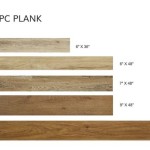Granite vs. Marble Flooring: A Comprehensive Comparison
Selecting the ideal flooring material for a home or commercial space requires careful consideration of various factors, including aesthetics, durability, maintenance, and cost. Granite and marble are two popular natural stone options, each offering distinct advantages and disadvantages. Understanding these differences is crucial for making an informed decision that aligns with specific needs and preferences.
Both granite and marble contribute an undeniable elegance and sophistication to any environment. Their inherent natural variations in color and veining create unique and visually appealing surfaces. However, their composition and physical properties differ significantly, impacting their suitability for different applications.
Durability and Resistance to Wear and Tear
Durability is a primary concern when choosing flooring, especially in high-traffic areas. Granite, an igneous rock formed from slowly cooling magma, is known for its exceptional hardness and resistance to scratches, chips, and stains. Its dense crystalline structure makes it highly impervious to water absorption, further enhancing its longevity.
Marble, a metamorphic rock primarily composed of calcium carbonate, is generally softer and more porous than granite. While marble possesses a certain level of durability, it is more susceptible to scratching, etching from acidic substances (like vinegar or lemon juice), and staining from spills. This makes it less ideal for kitchens or bathrooms where exposure to these elements is more frequent.
The Mohs hardness scale, which measures a material's resistance to scratching, provides a quantifiable comparison. Granite typically ranks between 6 and 7 on the Mohs scale, while marble generally ranks between 3 and 5. This difference in hardness underscores granite's superior resistance to abrasion and daily wear.
Furthermore, granite's low porosity contributes to its resistance to staining. When properly sealed, granite can effectively repel liquids and prevent them from penetrating the surface. Marble, due to its higher porosity, requires more frequent sealing to maintain its appearance and prevent staining. Failure to properly seal marble can result in permanent discoloration and damage.
The choice between granite and marble based on durability hinges on the anticipated traffic and potential exposure to damaging substances. For high-traffic areas or environments prone to spills and acidic substances, granite is generally the more practical choice. For areas with lower traffic and controlled environments, marble can be a suitable option, provided proper maintenance is consistently performed.
Aesthetics and Design Versatility
While granite excels in durability, marble often takes the lead in terms of aesthetic appeal for many individuals. Marble's characteristic veining patterns, ranging from subtle to dramatic, create a sense of luxury and timeless elegance. The smooth, polished surface of marble reflects light beautifully, enhancing the overall brightness and ambiance of a space.
Granite also offers a wide variety of colors and patterns, but its aesthetic is generally considered more granular and less flowing than marble. While some granite varieties exhibit veining, it is typically less pronounced than the veining found in marble. Granite's natural color variations, often including speckles and grains, can create a more rustic or earthy aesthetic.
The design versatility of both materials is considerable. Both granite and marble can be cut into various tile sizes and shapes, allowing for a wide range of design possibilities. Furthermore, both materials can be used in conjunction with other flooring materials, such as wood or ceramic tile, to create visually interesting and customized designs.
The choice between granite and marble based on aesthetics is largely subjective and depends on individual preferences and the desired design style. For those seeking a luxurious and elegant aesthetic with prominent veining, marble is a compelling choice. For those preferring a more natural and durable aesthetic with granular patterns, granite offers a versatile alternative.
Consideration should also be given to the overall color palette and style of the space. The color and pattern of the flooring should complement the existing decor and create a cohesive and harmonious aesthetic. Samples of both granite and marble should be viewed in the actual space to assess how they interact with the natural and artificial light.
Maintenance Requirements and Long-Term Costs
Both granite and marble require regular maintenance to preserve their appearance and longevity. However, the specific maintenance requirements differ due to the inherent properties of each material. Granite's low porosity and resistance to staining make it relatively easy to clean and maintain.
Regular sweeping or vacuuming is sufficient to remove loose dirt and debris. For deeper cleaning, a neutral pH cleaner specifically designed for natural stone should be used. Avoid using harsh chemicals, abrasive cleaners, or acidic solutions, as these can damage the sealant and dull the surface of the granite.
Marble, due to its higher porosity and susceptibility to etching and staining, requires more diligent and consistent maintenance. Spills should be cleaned immediately to prevent staining. A neutral pH cleaner specifically designed for marble should be used for regular cleaning. Avoid using acidic cleaners or abrasive scrubbers, as these can damage the surface of the marble.
Sealing is a critical aspect of maintaining both granite and marble flooring. Sealing helps to protect the stone from water absorption and staining. While granite is less porous than marble, sealing is still recommended to enhance its stain resistance. Marble, due to its higher porosity, requires more frequent sealing than granite.
The frequency of sealing depends on the type of sealant used and the level of traffic the flooring receives. Generally, granite should be sealed every 1-3 years, while marble may require sealing every 6-12 months. It is essential to follow the manufacturer's instructions for proper sealant application and maintenance.
The long-term costs associated with granite and marble flooring include the initial purchase price, installation costs, and ongoing maintenance expenses. While granite may have a slightly higher initial purchase price than some marble varieties, its lower maintenance requirements can potentially offset the higher initial cost over the long term. The frequent sealing and meticulous cleaning required for marble can contribute to higher ongoing maintenance expenses.
Professional installation is highly recommended for both granite and marble flooring. Proper installation ensures that the flooring is level, stable, and properly sealed. Improper installation can lead to cracks, chips, and other damage, which can be costly to repair.
Ultimately, the choice between granite and marble flooring depends on a careful evaluation of these three key points: durability and resistance, aesthetics and design versatility, and maintenance requirements and long-term costs. By considering these factors in the context of your specific needs and preferences, you can make an informed decision that will result in a beautiful and durable flooring solution for years to come.

Which Is Better Granite Or Marble Flooring Skytouch

Marble Vs Granite Difference Between These Two Materials Dedalo Stone

Let S Get To Know The Difference Between Granite Vs Marble
.webp?strip=all)
Which Is Better Granite Or Marble Flooring Skytouch

Marble Vs Granite When And Why Should You Choose Or Marmi Rossi Leading Processing Since 1966

Which Is Better For Flooring Marble Granite Or Tile Thediyplan

Which Is Better Granite Or Marble Flooring Skytouch

Marble Flooring Vs Granite Tile Viswanathan Constructions Private Limited

Which Is Better Granite Or Marble Flooring Skytouch

5 Advantages Of Having Granite Flooring In Your Home Rk Marble Blog
Related Posts








